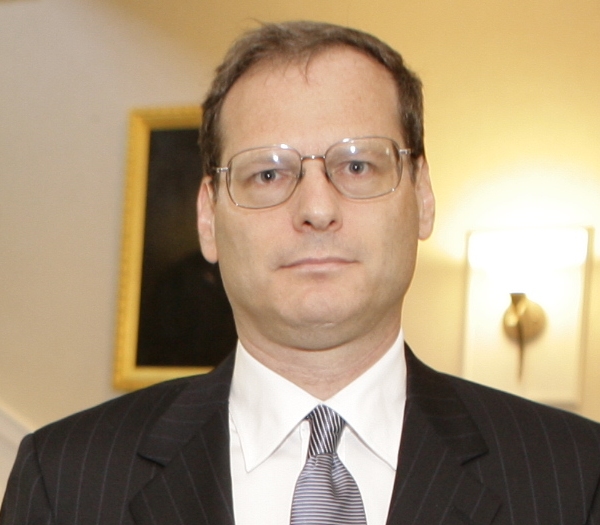Dell and the Digital Classroom
Jeremiah Okal-Frink and Adam Garry speak out on classroom technology

Adam Garry and Jeremiah Okal-Frink head up Dell’s education effort as Senior Director for Global Education Strategy and Manager of Education Strategy, respectively. Together, they do their best to help fill classrooms with the right mix of computers, software and back-end services to help teachers teach and students learn. We recently spoke about the past, present and future of education technology.
Tech & Learning: When it comes to schools, is the whole greater than the sum of the parts where individual devices, apps and services combine to create a teaching environment?
Adam Garry: Yes, the whole is greater than the sum of its parts when it comes to technology in the classroom. However, it’s more important to consider what all of these technologies combine to do. We have to figure out how do we make sure that the technology is interoperable, that the data seamlessly works and it gets the resources to the student, teacher and parent so that we can really drive the learning environment.
Jeremiah Okal-Frink: Providing high-quality educational experiences for all students is a huge undertaking. It’s more vital than ever that educators have access to resources that enable them to teach in ways that meet the demands of the modern student. In order to get to that point, we have to change the way districts approach education and embrace digital transformation.
T&L: Are we beyond a one size fits all approach?
AG: Yeah. District officials will say, “what’s your catalog?” Well, we don’t have a catalog because if you approach it from the angle of here’re these solutions, it’s not going to work. We listen to what they need and build from there. You can’t do one size fits all.
T&L: How has instruction changed in the years since you started teaching?
Tools and ideas to transform education. Sign up below.
JOF: One of the most exciting changes I’ve seen since I started my career in education is the increased focus on students and their learning. There is a growing movement to center learning on students and their experience. What do they enjoy and what do they find fun? Then, teachers will incorporate those responses and feedback from students into the learning experience.
AG: When I started teaching, I was working in a classroom that had one computer. The principal let me work with the media specialist to collect all the computers around the building to create a computer lab in the library. Over time, what we’ve seen is that we’ve brought a lot of technology into the classroom, but we often bolt it on top of traditional teaching methods.
T&L: How can the latest tech help children learn?
JOF: Technology empowers students by letting them progress at their own pace. When technology is integrated with new teaching and learning practices, students are empowered to develop new skills in highly personalized ways. Today’s students need technology that is durable, mobile and inspires them to lead their own learning. Likewise, today’s educators need mobile solutions to allow learning to happen anywhere and cultivate flexible learning spaces.
T&L: What advice do you have for teachers and parents as far as ed tech goes?
JOF: I would advise teachers and parents to listen to students. Incorporate and adapt to what kids are interested in and works best to ensure the best learning experience for them. Teachers and parents should also see the technology children are using as an opportunity to learn as well.
T&L: Is Dell in a unique position with everything from computers to networking to storage?
JOF: We want to help school systems really think about the most important thing they do, and that’s learning. The danger is that if you try to do everything you risk ending up with a diluted solution. We’ve identified where Dell is really strong and where it makes sense to partner where we aren’t the leader. For instance, Dell wasn’t going to get into the furniture business. We found a company that understood education to design and build new products.
T&L: Does security have to be built into everything you do?
AG: It’s becoming more and more part of the conversation with schools. They are very much aware that this is becoming the number one job of K-12 CIOs. They often don’t have the expertise or the people to fully do this work and there’s a lot of targeting of schools. As a result, we’re spending a lot of time educating schools. They know it’s a problem. They’re just hoping and praying that it doesn’t hit them.
T&L: What do you think the school of tomorrow will look like?
JOF: We’ve been working with a district in Ohio. They were saying “we’ve done classroom 2.0. What does classroom 3.0 look like?” The school of tomorrow is more and more beginning to look like a way for students to collaborate and interact. It might be through digital means – Office 365 or Google Docs – or it might be more physical where you’ve got a large format display on the classroom’s board where students can cast their screens to aid collaboration.
AG: We’re always looking for big problems to solve. We partnered with Microsoft to create Girls Who Game, an after school club where we teach the students and the teachers at the same time. These are Middle School girls who are using Minecraft and coding to solve problems. This year we asked them what the school of the future might look like in a hundred years. Through the end of January, these young ladies across Canada and the US will be designing what it will look like in Minecraft. We’ve seen a ton of excitement around this project.

